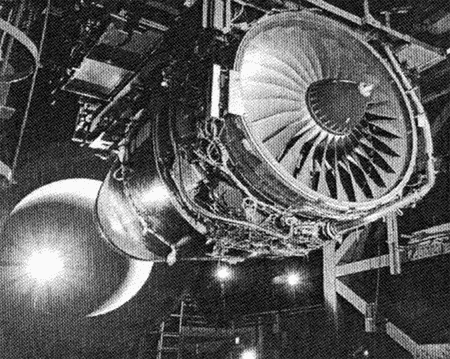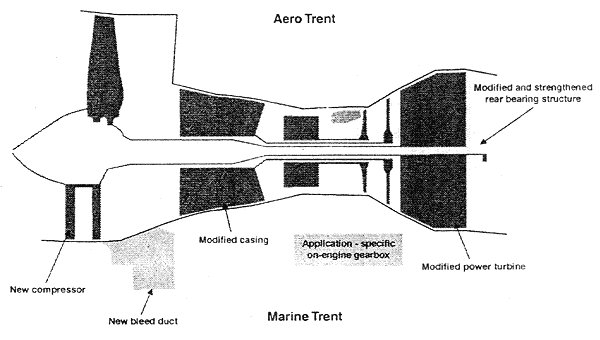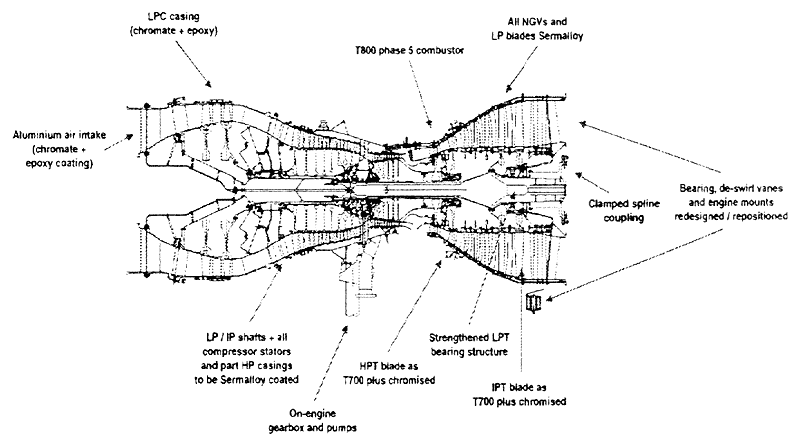The final phase of the introduction into service is a shock test. This is conducted on the same engine subjected to the 3000 hour endurance trial and consists of subjecting the engine, installed on a barge, to a series of explosive charges.
During the concept phase of the WR-21 many benefits were perceived, notably fuel efficiency. Through the development programme, these benefits have been confirmed. However working closely with the participating Navies many other benefits have been realised. The WR-21 provides an annual fuel saving of approximately 30% compared to a simple cycle engine operating a typical operating profile. This fuel saving can be directly converted to a through life cost saving. Alternatively the fuel saving can be translated into operational benefits. These benefits include an ability for the ship to stay on station longer and an extended ship range for the same fuel load. The additional range reduces the necessity for fleet refuelling vessels providing potentially significant cost benefits for a fleet.
The recuperation of the exhaust gas heat results in a low infra red signature. The lower exhaust temperature and mass flow also allows a reduced size of exhaust duct and the simplification of infra red suppression systems. Reductions in infra red suppression systems result in smaller exhaust stack heights and hence reduced radar cross section signatures.
The WR-21 testing has confirmed that the engine offers benefits to the environment with no visible smoke measured in the normal operating range. Additionally due to the engine cycle efficiency and control of the combustion process the WR-21 ensures the lowest levels of CO, CO2, UHC and SOx with comparable annual levels of NOx output when compared to a simple cycle engine.
3.2 Marine Trent
The Marine Trent is a marinised version of the latest Rolls-Royce Aero Trent 800 engine shown in Figure 8.

Figure 8 The Aero Trent 800
The first application for the Marine Trent is the project known as Fastship. The aero derived Marine Trent meets the Fastship 47 MW power requirement without water injection and still offers design margin.
The aero Trent offers many benefits including:-
・Excellent aero reliability statistics, supports high dispatch and voyage reliability.
・Good turn down capability offering low power harbour maneuvering capability and transit speeds for coastal waters and rivers.
・Able to withstand required seaway motion and extremes of ambient conditions
・Ability to withstand rapid transient speed changes.
・Minimum weight. Minimal man intervention required.
・Full power range capability.
The Marine Trent, in common with the Industrial Trent, has a triple spool arrangement. It is modified from the aero engine by the addition of a two stage LP compressor identical to that employed into the Industrial Trent. This modification replaces the aero engine fan, Figure 9. This design allows the intermediate and high pressure spools to operate at optimum speed and ensures commonality of parts within the compressors with the aero parent.

Figure 9 Derivation of Marine Trent from Aero Trent
The output drive from the gas turbine is provided through a coupling located at the hot end of the low pressure shaft. The combustion system is of an annular construction as used in the aero Trent 800 but is modified for diesel fuel usage. The HP, IP and LP turbines all have commonality with the aero engine turbines but employs silicon aluminide and chromising coatings for additional corrosion protection in the marine environment. These changes are shown in Figure 10.

Figure 10 Marine Trent Core Layout
The Marine Trent package has been developed to meet the specific requirements of the Fastship project. To reduce the overall weight of the package and also to ease transportation of the whole Marine Trent assembly the intake, enclosure and exhaust are supplied as separate assemblies. See Figure 11.
BACK CONTENTS NEXT